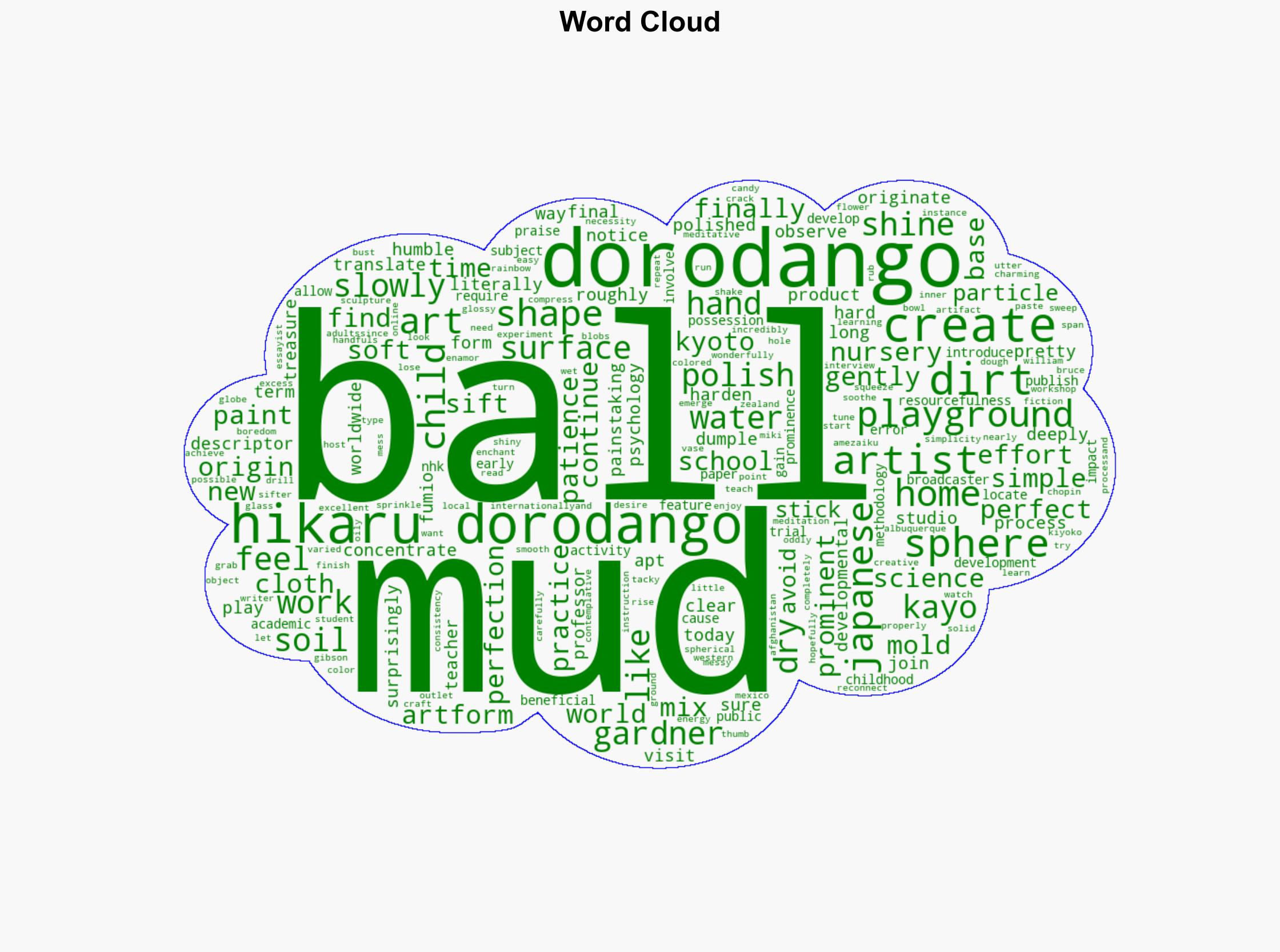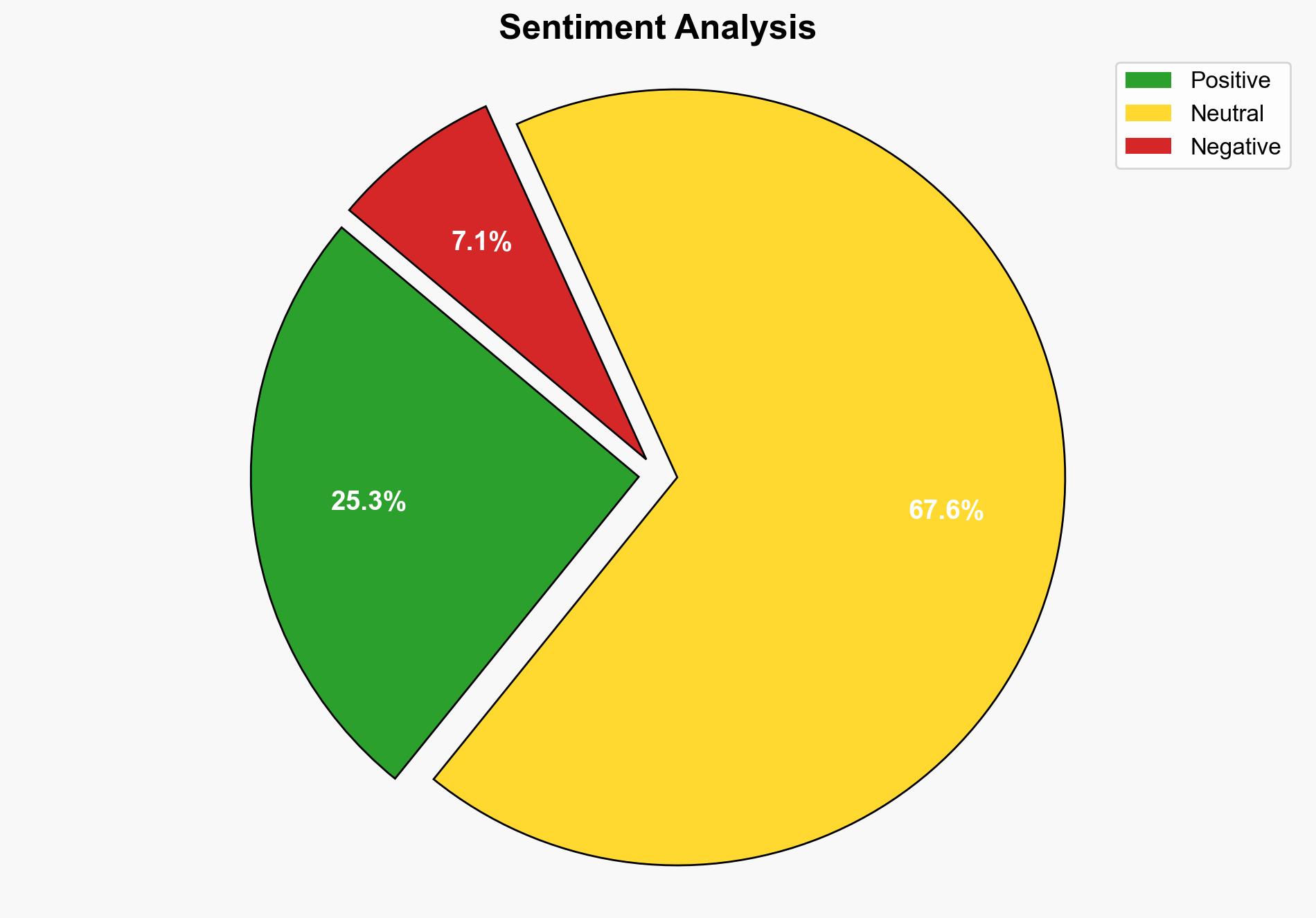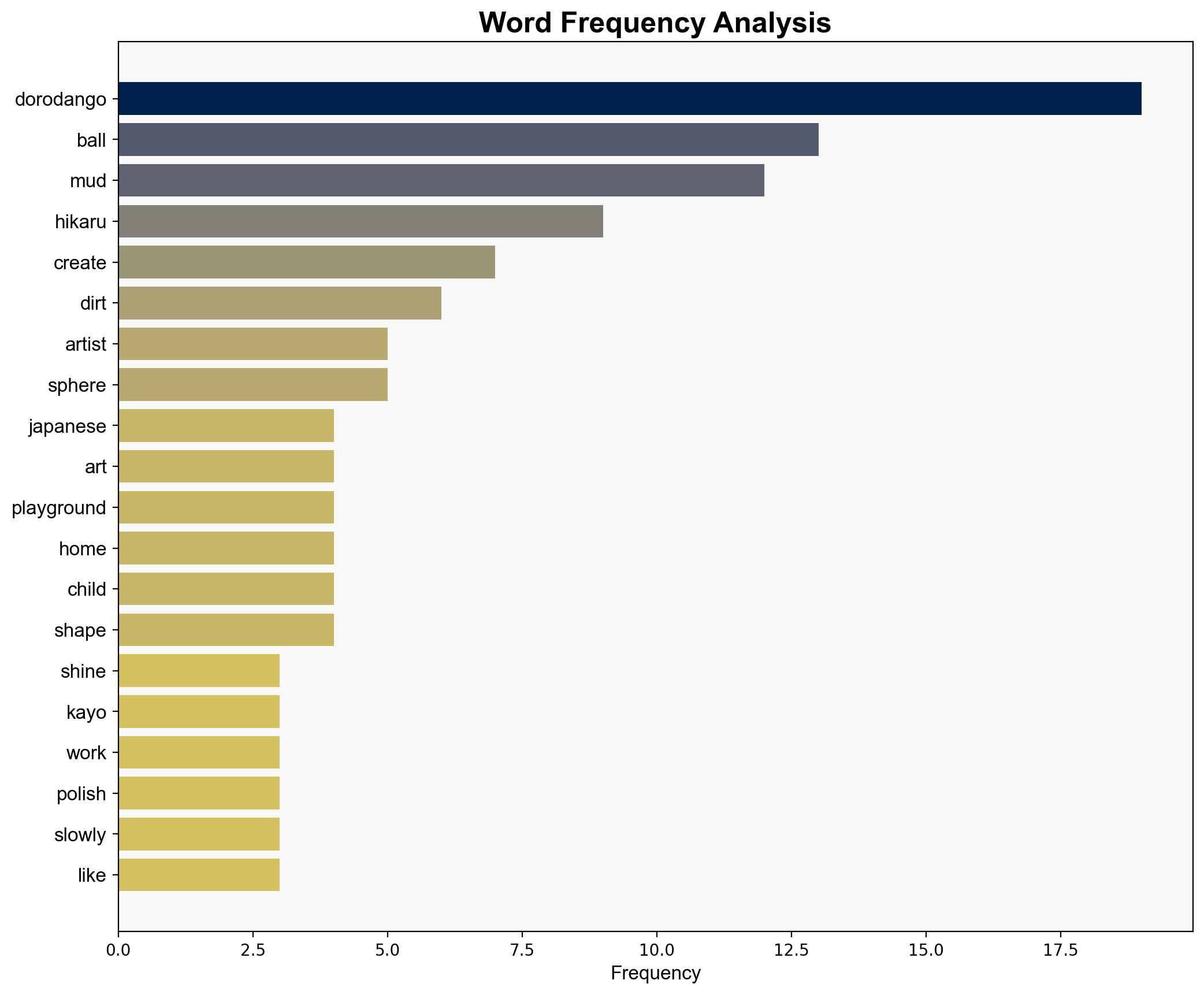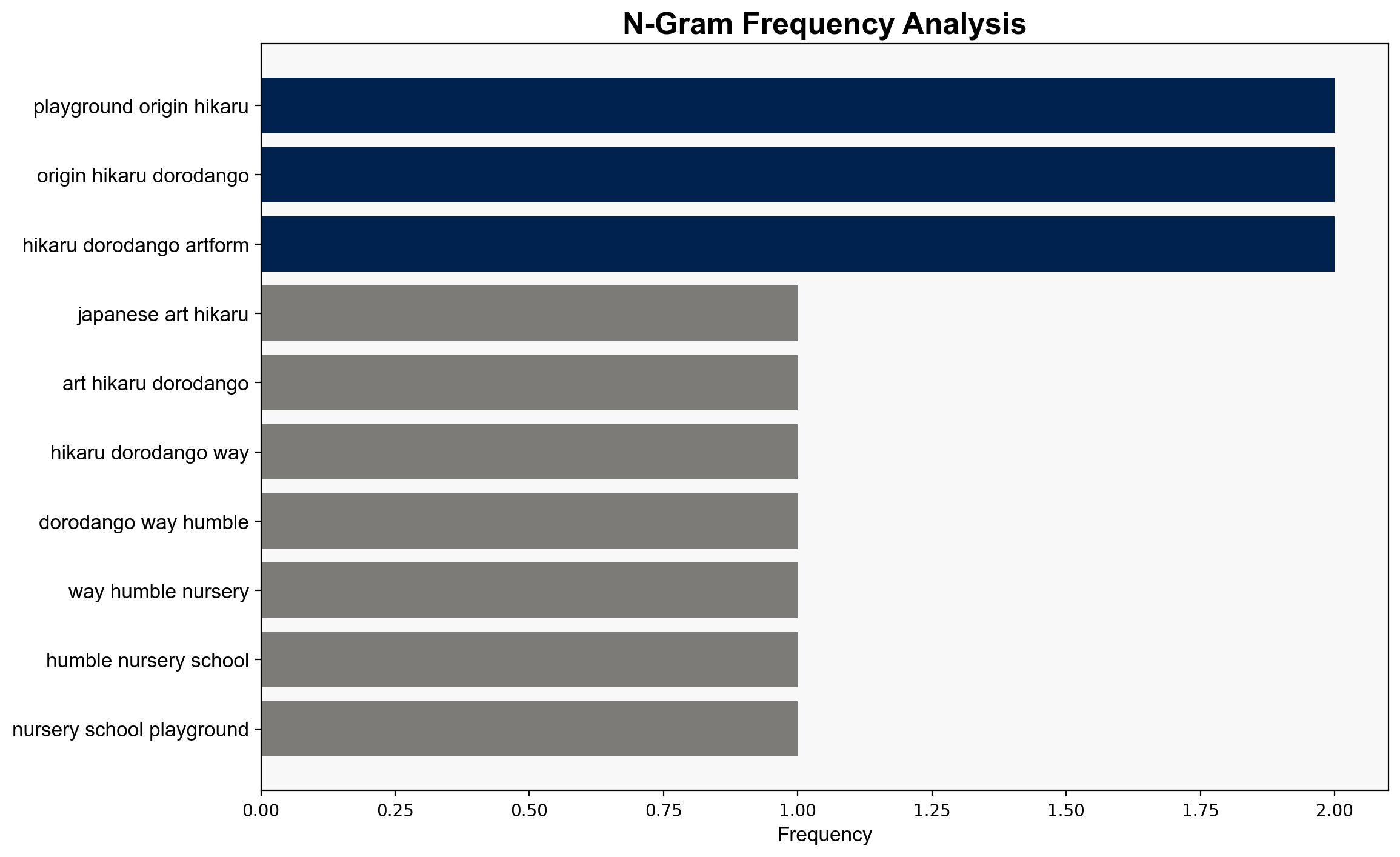The Meditative Art of Hikaru Dorodango How Japanese Schoolchildren Turn Mud Into Shiny Spheres – Mental Floss
Published on: 2025-08-12
Intelligence Report: The Meditative Art of Hikaru Dorodango How Japanese Schoolchildren Turn Mud Into Shiny Spheres – Mental Floss
1. BLUF (Bottom Line Up Front)
The analysis suggests that the art of Hikaru Dorodango, while seemingly a simple cultural practice, has broader implications for educational and psychological development. The most supported hypothesis is that Hikaru Dorodango can significantly enhance cognitive and emotional skills in children, with a medium confidence level. It is recommended to explore integrating such practices into educational curricula to foster creativity and mindfulness.
2. Competing Hypotheses
1. **Hypothesis A**: Hikaru Dorodango primarily serves as a cultural and artistic practice with limited educational impact.
2. **Hypothesis B**: Hikaru Dorodango is a valuable educational tool that enhances cognitive and emotional development in children.
Using the Analysis of Competing Hypotheses (ACH) 2.0, Hypothesis B is better supported. The structured process of creating Dorodango aligns with developmental psychology principles, indicating potential cognitive benefits.
3. Key Assumptions and Red Flags
– **Assumptions**: It is assumed that the process of making Dorodango inherently promotes patience and mindfulness. Another assumption is that the activity’s benefits are universally applicable across different cultures.
– **Red Flags**: The lack of empirical studies directly linking Dorodango to developmental outcomes is a significant gap. Additionally, cultural bias may influence the perceived value of the practice.
4. Implications and Strategic Risks
The integration of Hikaru Dorodango into educational systems could foster creativity and emotional resilience in students. However, there is a risk of cultural misappropriation or oversimplification of its benefits. If not implemented thoughtfully, it may lead to superficial adoption without genuine understanding or impact.
5. Recommendations and Outlook
- Conduct empirical research to validate the developmental benefits of Hikaru Dorodango.
- Develop pilot programs in schools to assess the practical integration of Dorodango into curricula.
- Scenario Projections:
- Best Case: Successful integration leads to enhanced student creativity and emotional well-being.
- Worst Case: Cultural misappropriation results in backlash and minimal educational impact.
- Most Likely: Gradual adoption with mixed results, requiring further refinement and study.
6. Key Individuals and Entities
– Fumio Kayo: A Japanese developmental psychology professor who has studied the educational impacts of Hikaru Dorodango.
– William Gibson: A science fiction writer who has expressed admiration for the art form.
– Kiyoko Miki and Bruce Gardner: Artists who have contributed to the international spread and adaptation of Hikaru Dorodango.
7. Thematic Tags
cultural education, developmental psychology, mindfulness, creativity enhancement





